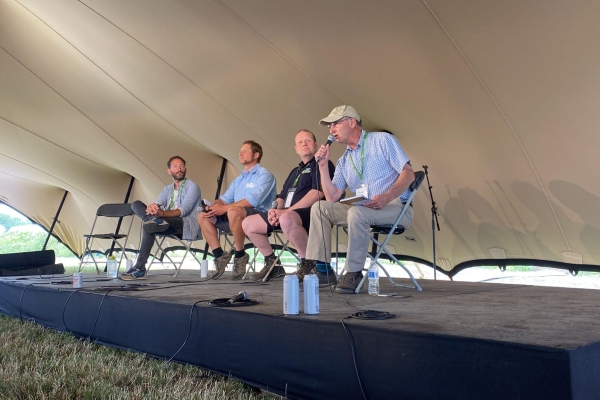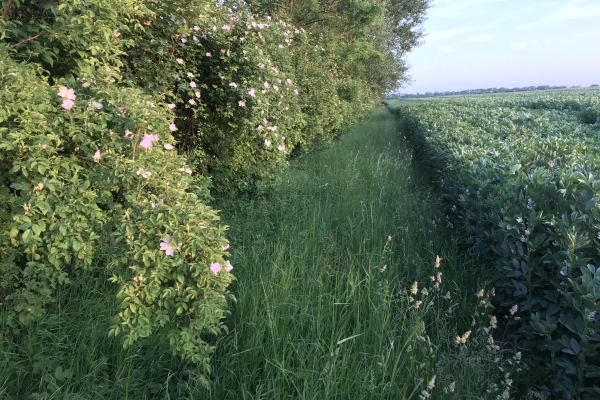Martin Lines
Papley Grove Farm, St Neots, Cambridgeshire
I am a third-generation farmer and contractor and grow mainly arable crops on the family farm and rented land. The farm is just over 400 acres. Our rented land and contract farm agreements bring the farm area up to 1334 acres.
We mainly do combinable cropping growing commodity crops of winter wheat, winter and spring barley, winter beans and oil seed rape (OSR). We always try and find a human food home for the products or, as with beans, they go to an animal feed home to replace imported feed.
I am Chair of the Nature Friendly Farming Network (NFFN) and have a particular interest in farm conservation management. We have just finished an ELS / HLS agreement on the home farm and I’m hoping to go in to a Countryside Stewardship agreement from January 1st 2023. For the last 10 years our farm has been in stewardship schemes to try to improve the natural habitat for wildlife on the farm. We replaced many hedges around the fields which had been removed, improved the few that were remaining and planted new ones. We also established grass strips alongside hedges and ditches and on our field boundaries. Over this time, we saw a significant increase in both flora and fauna on the farm. RSPB volunteers undertook several surveys which identified a wide range of species, including birds of high conservation concern such as turtle doves, yellow wagtails and corn buntings.
We have been planting areas of wild bird seed mixes and creating wildflower areas (see the two videos below) and flower enhanced boundary strips, as well as leaving an area of fallow land as a food and nesting source.
We have over 40 skylark plots distributed throughout our fields (see video footage below) and continue to sympathetically manage our old ridge and furrow meadows.
I hope to continue and extend our conservation work and link up wildlife habitats on neighbouring farms. We have made many wildlife corridors across the farm to help the wildlife move about.
Other nature friendly farming practices we carry out on the farm are following an integrated pest management (IPM) approach, using chicken manure to help improve soil and replace artificial fertiliser, and cover cropping and direct drilling.
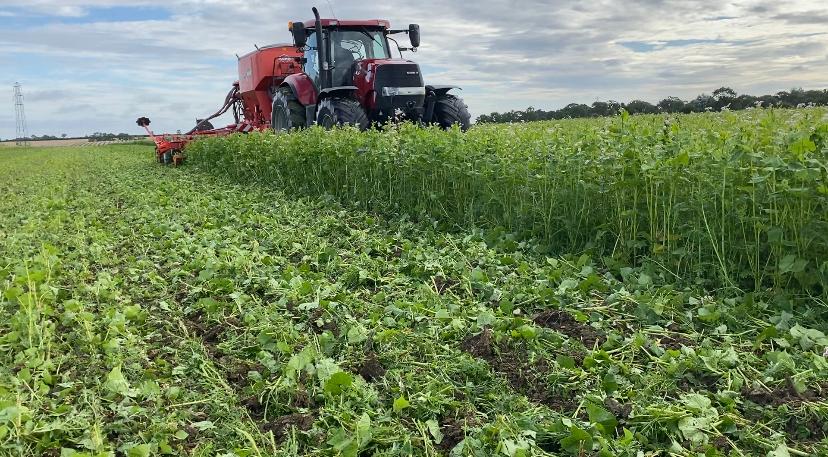
We have started to bring in sheep to graze cover crops in the winter and are trying to use a crimper to kill cover crops. We are also using soil analyses, tissue and satellite imagery to help map where nitrogen (N) input is needed, and have been carbon mapping our soils to establish a base-line. For me it’s about how do we transition away from the use of artificial inputs and find a system where we use as minimal inputs as possible? I’m not organic but I might get there one day.
Talking to other like-minded farmers as part of the NFFN has given the opportunity to share best practice and understand that the best way we can farm is farming with our environment around us. Watch the video below to hear me describe what I have done on the farm to attract wildlife and my message to farmers who may be interested in joining the NFFN.
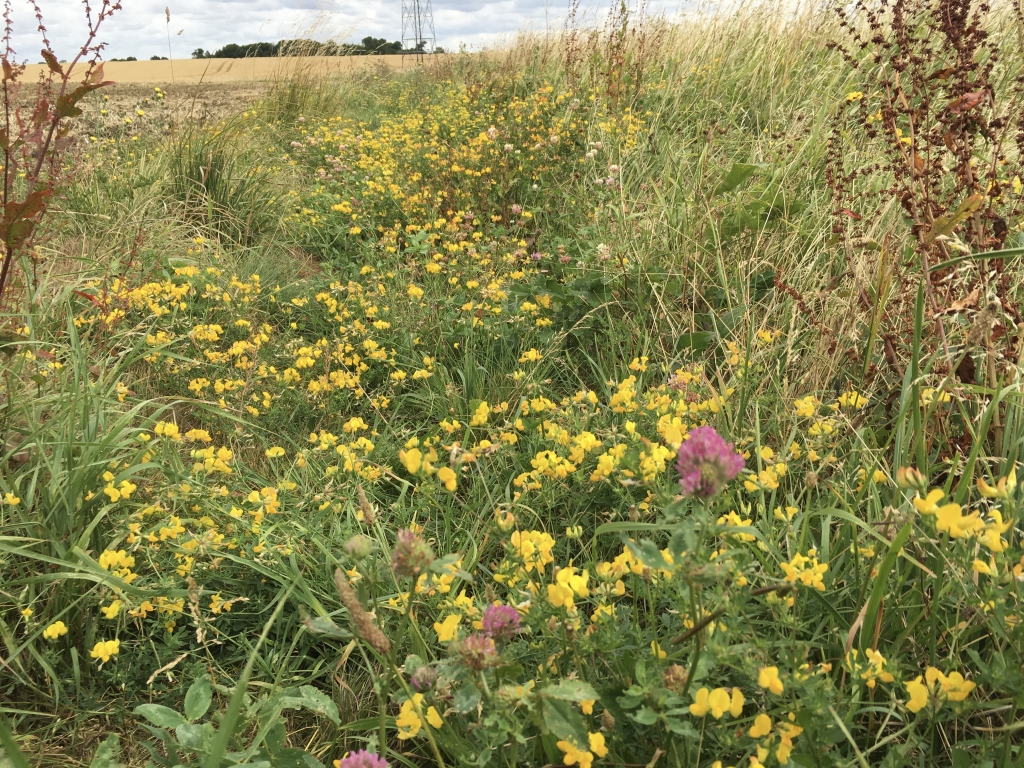
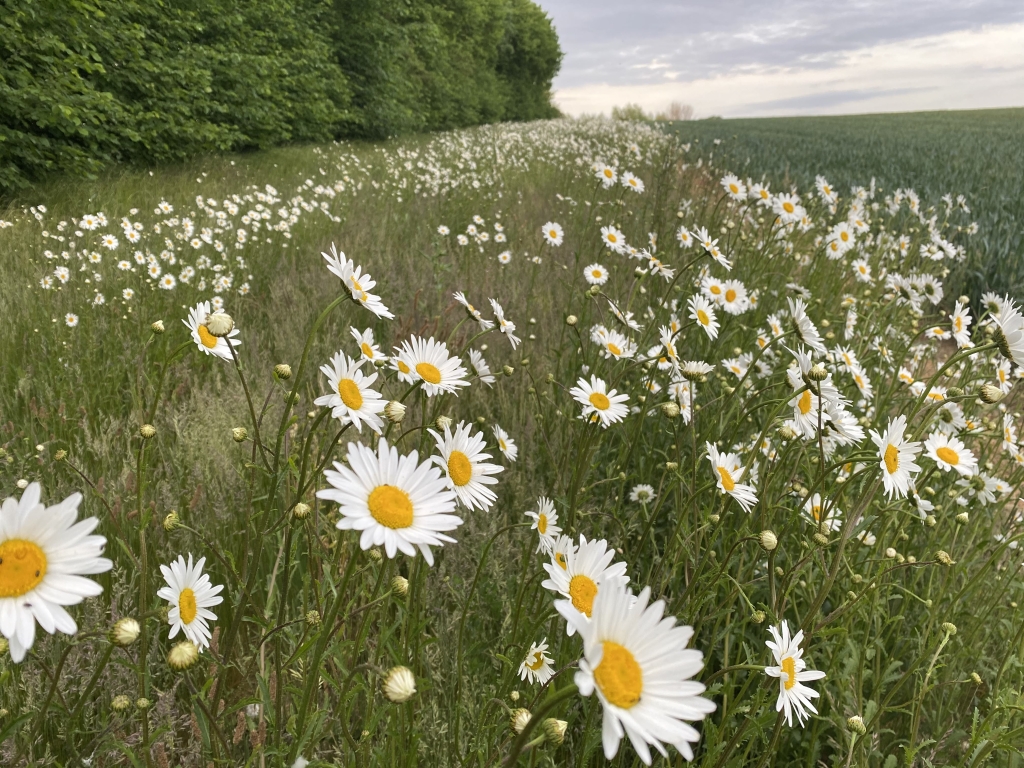
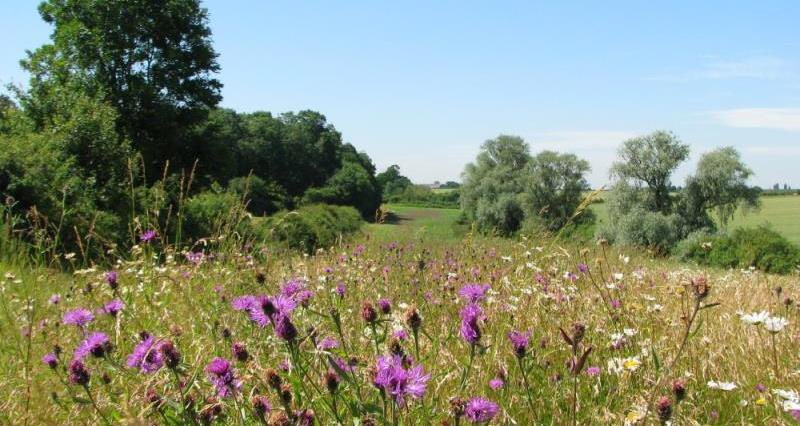
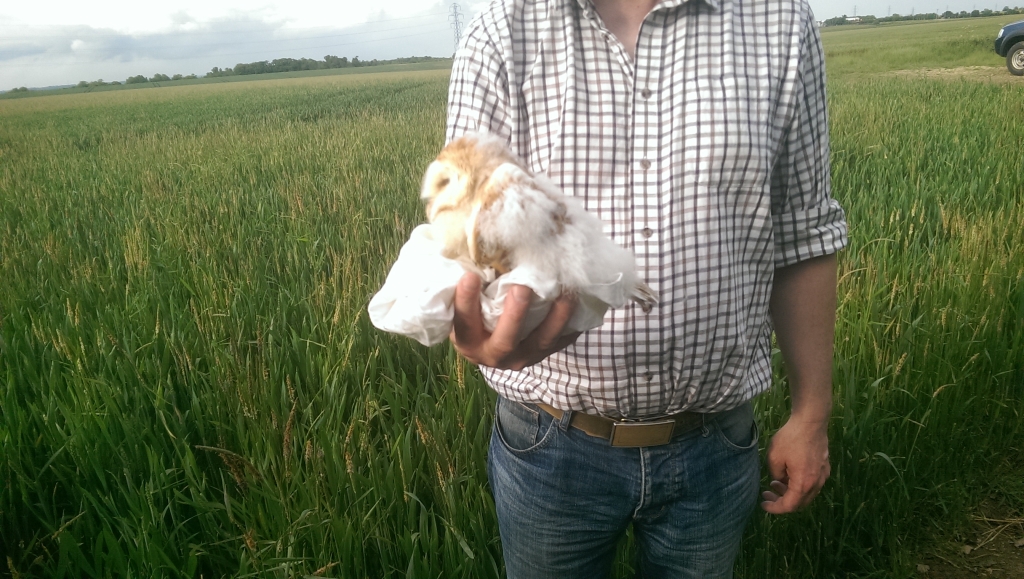

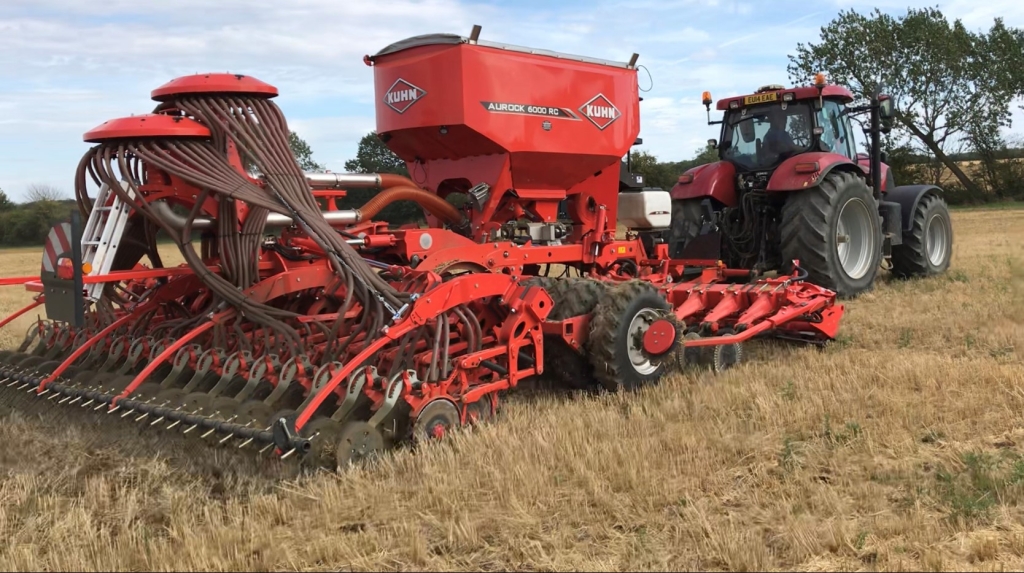
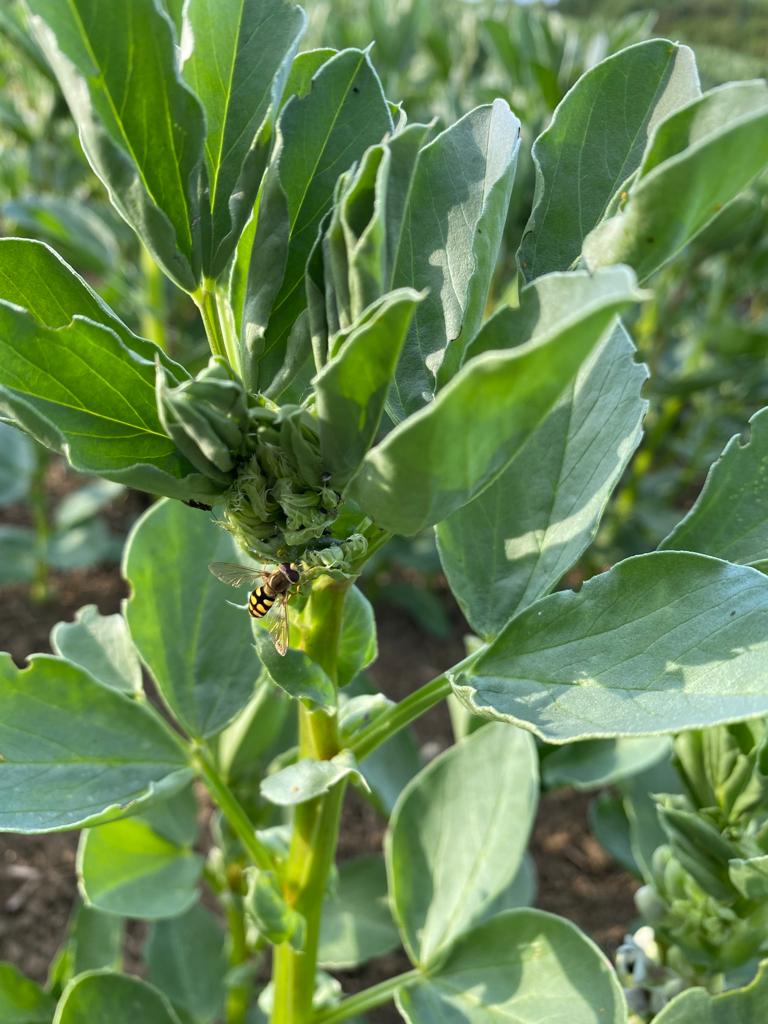
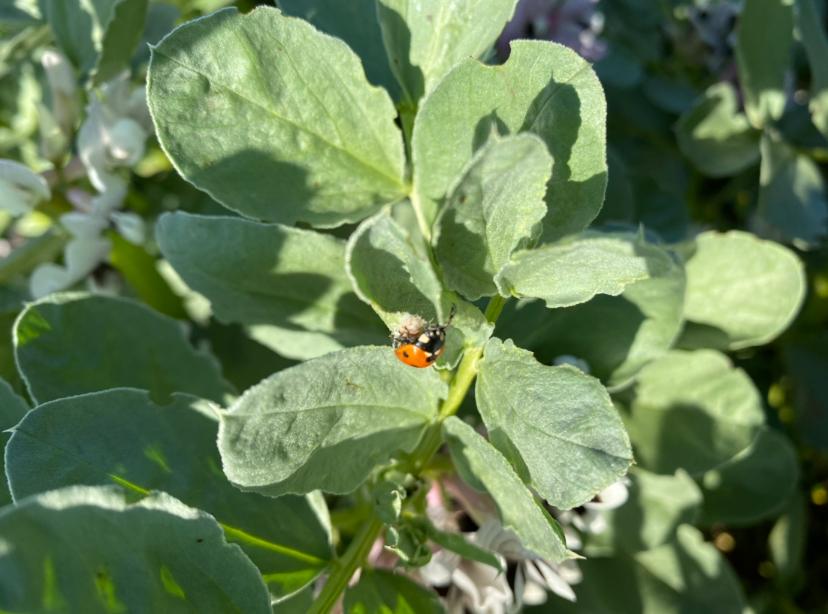
Sustainability in practice
Direct drilling, cover cropping and crimping
I moved from a plough-based system to using a machine that moved the soil I wanted to a depth I wanted, allowing us to treat fields with compaction or soil health problems differently. I now try and work with our soils with the understanding that doing less is better. My soil is my asset – it’s where I get my production from.
I grow cover crop mixes including buckwheat, phacelia, sunflower, vetch, linseed, fodder radish and crimson clover, to benefit the soil health, produce and grow nutrients, harvest the sunlight and turn it into organic material to help increase our soil organic content.

The machine I have been using also allows us to use different seed mixes according to the area, so in compacted zones we can put in a different crop mix and target those areas. We can also intercrop rows. In addition to improving our soil health and reducing compaction, the low soil disturbance due to cover crops and direct drilling has led to more insect life in the fields – predators are building up and managing most of our pest problems, allowing us to reduce our operation and input costs. This video explains the machinery I’ve been using and benefits I’ve noticed in a bit more detail:
This spring (2022) we have used a shallow cultivator to try and terminate the cover crops and move away from using glyphosate – we are actively trialling and assessing other alternatives to using glyphosate – looking at what the complications and costs are. There can be cultivation costs and yield penalties (as we have experienced with trialling manure and cover crops in very dry spring weather), but we have to try.
We have sheep to graze the cover crops in the winter and add fertility and biology into the soil. We work with a grazier – establishing a grazing plan of where, when and how we want to graze to help build soil health.
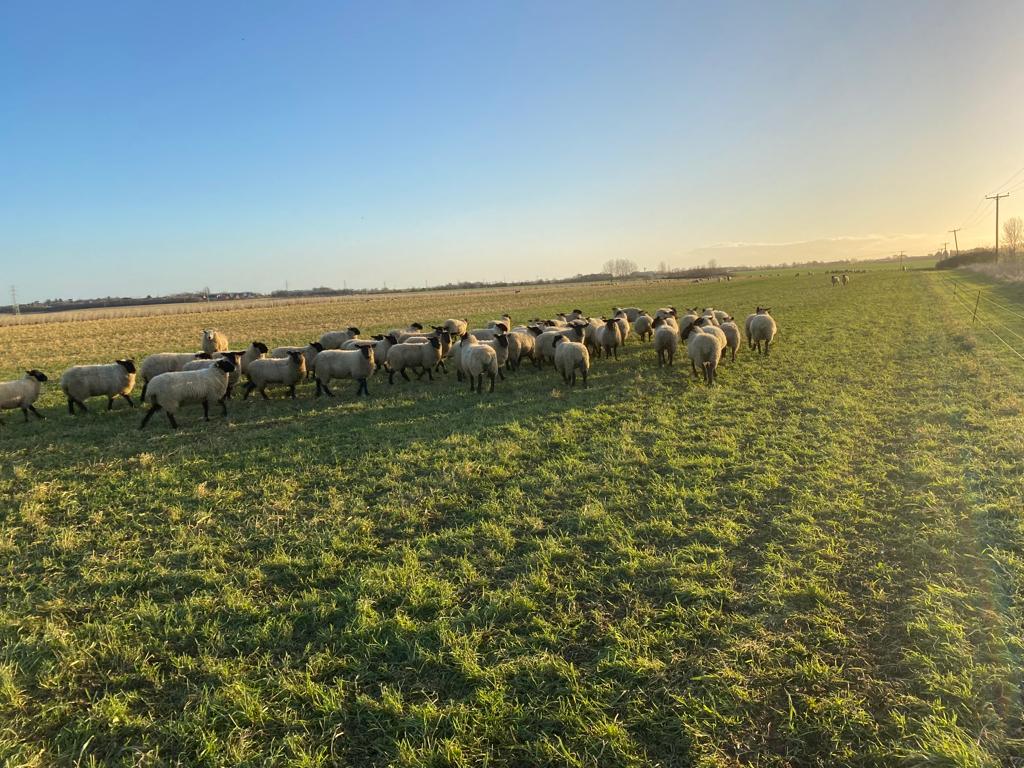
Nature-based IPM
About 9 years ago I decided to do what I could to control pests without insecticides and monitor the impacts on my yields and profit margins. There is no blueprint to IPM – it has to be a whole farm and landscape approach, it is not as easy as conventional farming with pesticides. Many measures I have adopted in the transition to regenerative agriculture have multiple benefits.
I have broadened the range of crops I grow; moving from a system of 2 wheats, OSR, 1 or 2 wheats, and beans, all winter-sown, and a ratio of crops in the ground of roughly 70% wheat, 20% OSR, 10% beans, to now having winter and 30% spring barley and no fixed rotation, and tailoring the cropping in each field to help with weed pressure and soil health. If I have a black-grass problem I will not go with a second wheat, even though this may give a better return than a spring or break crop. Crops in the ground now are about 40% wheat, 30% barley, 20% beans and 10% OSR. This would seem like a less profitable rotation, but I have slashed my cost of production (which has made up for any reduction of yields and crop values) and my net profits have increased.
I use pest resistant varieties where possible and have moved back to traditional recommended cropping intervals – with 5-6 years between OSR crops. I drill cereals after mid-October if weather allows, rather than September to reduce black-grass and autumn aphid pressure. I avoid over-feeding crops with N fertiliser in one application to prevent rapid growth, making the crop more prone to pest and disease pressure.
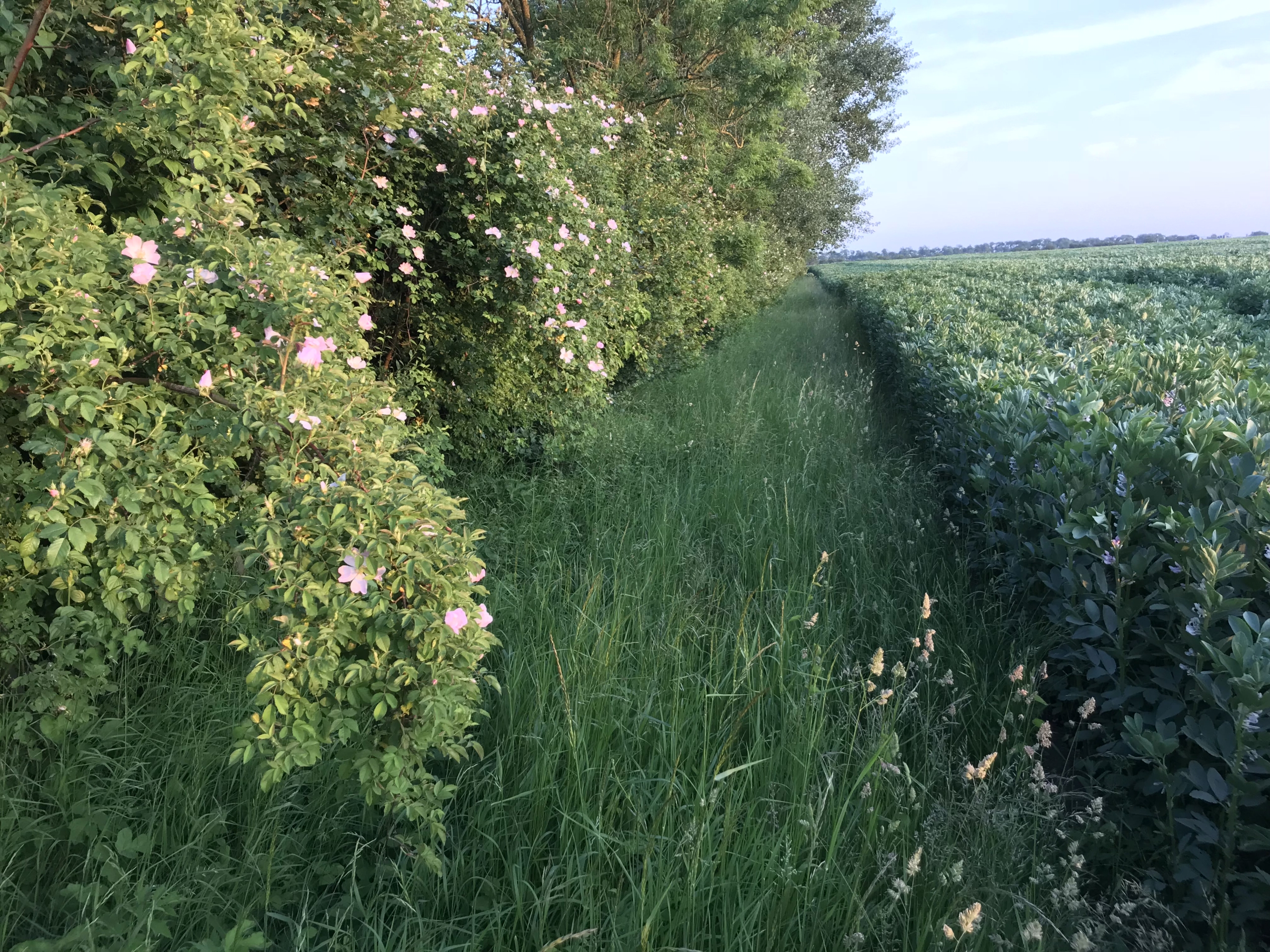
Creating habitats to improve biodiversity and enable beneficial insects and spiders to thrive is key. In addition to flower-rich margins around the outside of the fields (see the video footage below), I’ve been adding flower-rich strips every fourth tramline (120m) to improve natural pest control and insect pollination.
Our widest machine is 30m so we have 6m margins with 1m tussocky grass on either side and 4m of flowers down the centre.

The flowers are cut and removed in the autumn and the tussocky grass is left for the continued winter hibernation of the insects. Data from ASSIST trials shows that most bugs move 50m – mine are hopefully going to be super fit and go 60m – in our system we have 4 tramlines in-between so we can go up and down twice, to increase efficiency. We also use these avenues now in our grazing system during the winter – moving the sheep up and down in them so they have defined pieces to graze.
I see the benefits of in-field strips on the yield maps of my OSR and beans (see video below); yields are 5-20% greater next to the strip and tail off further into the field. This also reflects my observation of the number of bumblebees I see across the fields. The yield response is probably a combination of the effects of increased insect pollination and increased natural pest control.
We have been carrying out trials with PGRO (see here). Results show that our farm compared with a farm that still uses some insecticides and has a conventional farming system is showing less pest damage and more biodiversity within the whole insect system.
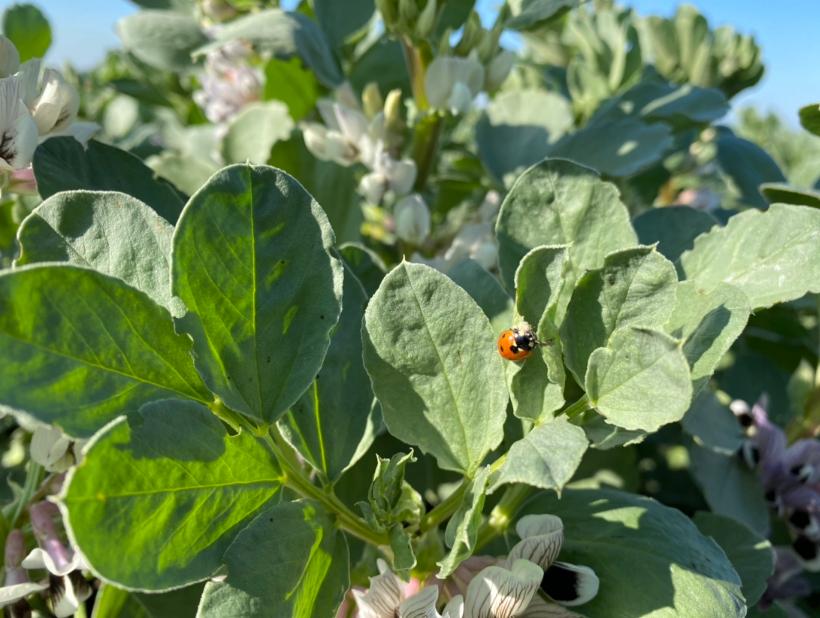
Where we have good marked habitats, we are having a lot less damage from bruchid beetle, and we have two thirds more biodiversity in our margins and on our farm (as shown in the sweep nets). We are repeating the trial this year.
Improved soil health, crop health and better rotations have also enabled me to cut down on my use of herbicides, fungicides and molluscicides. I monitor slug levels, but if I see lots of beetles in the field, I see if they can do the job first and only treat areas that seem to be struggling.
I have been trying a few ideas this last year to further benefit from the IPM approach – I’ve sown a mix of wheat varieties in my wheat field to avoid pest and disease risks that can arise from a single variety monoculture, have undersown beans with clovers, and tried intercropping oilseed rape with phacelia and clovers to see if these measures will disguise the crop from pests and boost beneficial numbers further.
Overall, crop yields are a little lower, but this is more than made up for by the reduction in costs of production and the net margins are up, despite reducing the areas of wheat, our most profitable crop. There are visibly more beneficial insects and spiders and more wildlife overall, especially birds. The incidence of pest levels exceeding economic thresholds has declined to zero.
You can find this information in the Farm Wildlife case study, which also gives more detail on what led me to transition towards not using insecticides and the environmental and cost impacts of that and of reducing herbicides, fungicides and molluscicides and applying the other regenerative agriculture techniques I describe.
Reducing N application and establishing a carbon baseline
I’m very focused on how we remove artificial fertiliser and on what we need to grow a profitable crop, with a concentration on margin rather than yield. We are carrying out soil analysis for N application in the spring and also using tissue and satellite imagery to help map where it is needed. We are finding so far this spring that half our winter wheat hasn’t needed any fertiliser and we have delivered almost all the fertility in our soil for the spring barley from our cover crops. By using data and science and the tools to assess our crops we are actively reducing the use of artificial fertilisers.
We have carbon mapped all our soils for organic and carbon content to give us as baseline and assess how it’s changing, with a view to looking to the future of the carbon markets. This has been doing using deep core soil sampling and a light machine to scan the soils. I have a lot of apprehension around claims of building carbon in to soil – I’m aware that after establishing a baseline, I then need to understand what my business needs will be and then potential areas of market opportunity…
Motivations
I joined the NFFN because I believe that safeguarding the future of our countryside and the wildlife that resides in it is imperative and the way that we produce food in the UK and the rest of the world needs to radically change.
Healthy soil and a healthy environment are essential to long-term food production. If we do not deliver a healthy environment, the next generation will not have reliable food production. Unless we join up environmental improvements, climate mitigation and biodiversity delivery alongside production of food in the landscape, we cannot guarantee the long-term availability of food. A national shift to nature friendly farming is one of the only ways we can guarantee long-term food production.
The diversity of the British countryside is an asset that is vital to wildlife and of great value to the general public. The right support is crucial to the continuation of work done by many farmers and landowners to improve the habitats for wildlife. I believe that by working together, we can enhance and improve our countryside for all to benefit, but we need the right policies and support in place to help us fulfil the potential that farmland has for conservation.
Read more about my thoughts on the value of the NFFN and what it offers to the industry here.
Listen to Martin talking about his farm and the story behind the NFFN in this ‘Meet the Farmers’ podcast published in January 2019:
Agricology · ‘Meet the Farmers’ – episode 29 – Martin Lines
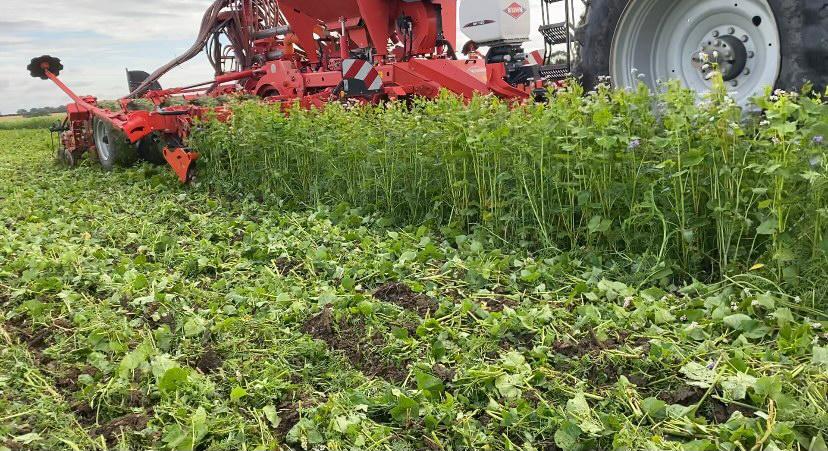
Farmer tips
- Have an open mind to change.
- When spraying if possible try leaving a small area untreated to see if the treatments was really necessary.
- Plan the changes you want to do over a 5 to 10-year process giving you time to adjust the business and purchase any new equipment needed. This will give time for your soil and environment to change with you.
- If you are doing a process now to deal with a problem in your system how can you work with nature to make it better in the future?
The video footage below is an example of trying to safeguard the future of some of our wildlife – using herbicides to selectively target weeds and protect lapwing nesting in a field of winter beans.
All photos courtesy of Martin Lines. All Rights Reserved



